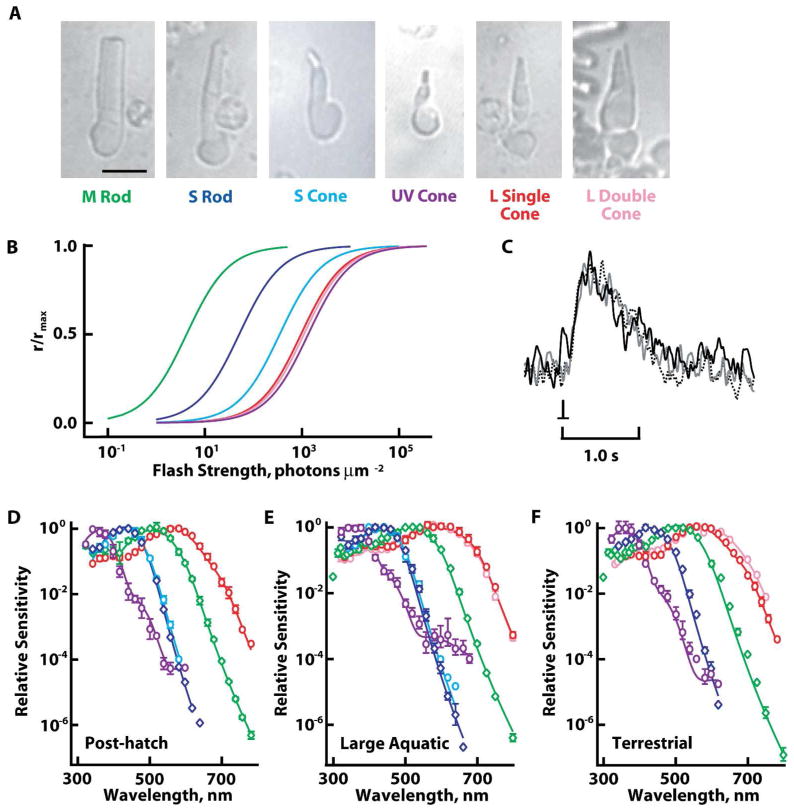Figure 1.
Spectral classes of rods and cones. A. Morphologies of representative photoreceptors of tiger salamanders. Images were captured with an infrared light-sensitive camera. Scale bar = 20 μm. B. Relative sensitivities of salamander rods and cones to flashes at their respective spectral maxima. Colors of the individual curves correspond to the labels for the cells in A. C. Averaged responses of a UV cone from a terrestrial salamander to dim flashes at 620 nm (continuous black trace), 440 nm (gray trace), and 360 nm (dashed black trace) flashes. Responses were scaled to their peak amplitudes. D–F. Evidence for lack of change in opsin content of rods and cones during development. Spectral sensitivities of: S rods, blue diamonds; M rods, green diamonds; L single cones, red circles; L double cones, pink circles; S cones, blue circles; and UV cones, violet circles from hatchling (D), large larval (E), and terrestrial (F) salamanders were fit with sums of visual pigment templates (continuous lines, see Methods). L double cones from hatchlings were not recorded. S cones were not found in terrestrial salamanders. Error bars represent SEM.

